"There is no cloud; it's just someone else's computer!"
It’s a joke that’s bounced around technical teams for years. And yes, it’s obviously an oversimplification. But the closer you look at what actually comprises a cloud infrastructure, the more you realize how close to the truth it really is.
At its core, the physical infrastructure that powers the cloud comprises all of the hardware required to provide connectivity and the applications the cloud delivers to its customers. This can include not only the servers but also the virtualization platforms, networking equipment, firewalls, load balancers, and other appropriate components.
The shift to the cloud has unquestionably unlocked value from both a cost and productivity standpoint. But from a high-level technical perspective, it’s simply a more efficient implementation of existing ideas and technical solutions that could—and often do—exist in traditional on-premise environments.
Cloud implementations bring a ton of business advantages. But just like an on-premise environment, cloud infrastructures are still subject to events, incidents, problems, and changes. While the cloud reduces the support costs for owning and maintaining the IT infrastructure it replaces, there is still a risk of expensive outages and downtime if they’re not managed well.
Therefore, not only is monitoring and managing the cloud essential, the way that support is provided really shouldn’t be approached all that differently than an on-premise environment. This is especially true in “larger” cloud environments subject to more constant change and persistent threats to availability and performance.
However, many organizations with extensive cloud environments (namely enterprise and larger mid-market companies) fail to realize that their cloud infrastructures demand close to or just as much care and attention as they would if they were on-premise, and overlook critical components of IT service management (ITSM) as a result.
Without the proper management program in place, these organizations operate in a constant state of vulnerability to issues that their standard cloud tools and DevOps model may not be anticipating or equipped to handle; issues that, when left undetected or unresolved, can metastasize into bigger problems and eventual outages precisely where and when they’re least expected.
Here, we briefly explore why it’s important to monitor and manage the cloud to address these vulnerabilities, especially in enterprise organizations whose cloud environments are extensive and where the company’s productivity and bottom line depend on them being up and running at peak performance around the clock.
We’ll also offer some thoughts on how a modern Network Operations Center (NOC) provides the people, platforms, and processes best-suited to fill this ITSM gap—monitoring and managing enterprise and similarly large cloud infrastructures in many situations.
If you’d like to explore potential NOC support solutions for your cloud infrastructure, don’t hesitate to schedule a free NOC consultation with our Solution Engineering Team.
The Common Challenges and Shortcomings of Cloud Infrastructure Monitoring and Management
There are two primary problems with the ways many companies support their cloud infrastructures:
- They rely solely on developers and the DevOps model (or a similar model) to monitor and manage their cloud assets.
- They don’t realize that ITSM is still required to support the technical components critical for daily operations across a cloud and compute infrastructure.
Let’s briefly unpack both of these problems, starting with the first.
Problem #1: DevOps and Cloud Infrastructure Management
The DevOps model is the most popular cloud support model for managing provider platforms like AWS, Google Cloud, and Azure today.
DevOps teams typically arm themselves with the native cloud management tools their cloud providers offer, and perhaps an external tool that:
- collects that native data;
- extracts some additional insight from it, and
- wraps it in a nice interface.
For the most part, these tools are decently powerful. They give DevOps most or all of what they need... to do DevOps, that is.
A tool like AWS Console, for example, can give you an idea if your infrastructure is up, how much load it’s handling, and other “standard level” metrics. These tools can also take your logging and find alerts and alarms. Add an external cloud-enabled tool like LogicMonitor or NewRelic, and you may be able to wring a few more insights by squeezing that data in a few different ways.
If possible, you may also run an agent inside the cloud infrastructure itself, which might afford better and more diverse insights. But most tools are based on existing APIs they can connect to.
Now to the problem: this native data and these tools only go so far.
Companies that confine their cloud management to developers and provider tools are limited to the data these tools let them access and use, as well as the capabilities of those tools themselves.
For an enterprise, these limitations simply may not enable the monitoring coverage or active management capabilities needed to detect—let alone work to resolve—many of the events, incidents, changes, and problems impacting the cloud (and the business services that rely on it).
Very simply, the DevOps model and similarly popular tools and processes, on their own, are often not enough to provide the level of cloud monitoring and management an enterprise or similarly cloud-complex organization really needs.
Problem #2: An Underappreciated Need for Day-to-Day ITSM
Now to the second common problem of enterprise cloud management: A lack of traditional ITSM required to support the technical components of daily operations across a cloud and compute infrastructure.
Cloud infrastructures typically scale themselves up and down as load fluctuates. Regardless of your operational model, very few enterprises have a team that can employ an ITSM framework using ITIL to best practices to effectively handle the day-to-day technical challenges of a cloud infrastructure in constant flux.
Incident management, while critical, isn’t sufficient on its own to address the issues and changes that impact a “fluid” cloud environment. Enterprises and similarly large organizations can find immense value in implementing workflows that come out of a framework like ITIL, such as:
- Problem management to address recurring incidents and other trending issues—ideally identifying problems with IT infrastructure and applications before they can cause incidents. Identify those places where there are performance issues, database errors, and code problems so that root causes can be identified, known errors can be identified, and problems can be resolved.
- Capacity management to ensure the IT organization has the right amount of resources at the right time (and at the right price) to keep operations running smoothly. Cloud computing resources ultimately cost the enterprise money. Managing capacity ultimately leads to money saved.
- Change management to balance the benefits and costs of a change and implement it in a way that minimizes business disruption. Change management in the DevOps model is the most challenging item to manage, where an ITIL-driven ITSM solution will solve.
“When teams bring ITIL’s management processes into their cloud management program to augment their DevOps or other support teams with ITSM, they can start seeing and looking at trends. They find ways to prevent incidents before they are introduced due to code and environment changes. They can provide insights into capacity and look beyond incidents. After a while, they naturally develop a smoother set of operations.”
— Ben Cone, Former Senior Solutions Engineer, INOC
The Role of the NOC in Providing Cloud Infrastructure Support
When companies migrate to the cloud, they often assume that monitoring and managing these environments won’t be nearly as necessary or at least as involved as they were before.
“What’s the value of a network operations center (NOC) in the cloud?” one might ask, assuming their migration away from an on-premise infrastructure also earns them a migration away from the traditional NOC.
The short answer, given the similarities of the support challenges we just highlighted, is, “well, for the same reasons they’re valuable to every other environment.”
Many technical teams come to find that caring for their cloud infrastructure isn’t all that different from caring for their data center infrastructure except that it’s virtualized and consumed over the internet. While that support is delivered to the cloud rather than on-premise assets, the need for it and the management processes used to carry it out largely remain the same.
So, what then is the role of the NOC in cloud management? What value does it provide?
Just like in an on-premise environment, monitoring and managing the cloud through services and capabilities typically exclusive to a NOC gives companies an incredible advantage: a set of human and AI-enhanced eyes—available 24/7—that can operate outside of the bounds of the programmatic logic most existing cloud management tools rely on to work.
In other words, the modern NOC brings a list of capabilities and value-adds companies are hard-pressed to find elsewhere, to solve ITSM problems that persist in the cloud.
For example, the modern, cloud-equipped NOC can:
- use a combination of AIOps and human expertise to analyze virtually all the data within the environment and detect even the subtlest signals of issues;
- identify unexpected or unknown criteria, and
- make informed decisions about how to diagnose, troubleshoot, remediate, and if necessary, escalate issues to get them resolved with minimal disruption to business services.
Again, most tools and services offered by cloud providers can’t go this far into support because most of their customers don’t need such deep support. But enterprises do. And therefore, a well-equipped NOC is ideally suited to augment these tools and services to collect more data and, most importantly, act on it.
If, for example, an application event occurs (let’s say the application isn’t responding appropriately), the NOC affords more than just a call to a developer.
The NOC can:
- Very quickly diagnose that this is in fact a database issue and pinpoint the problem to how the code is being processed in the cloud.
- Restart or kill an instance that’s out of control (either through existing scripts or logging in and addressing the issue).
- Add an instance through the available tools.
“Those ‘NOC level’ troubleshooting tasks are immensely valuable since companies don’t have to spin up a developer resource 24x7. That, in my mind, is the biggest value of a NOC. When you think about it from an operational perspective and its traditional role within an organization, this is a group that is 24x7x365 in most organizations and has the built-in processes in the operations arm of an organization to be able to respond and apply resolution workflows to issues and problems.”
— Ben Cone, Former Senior Solutions Engineer, INOC
The Value of Outsourced NOC Support for Enterprises Running Cloud Infrastructures
One of the main historical benefits of outsourced NOC support—or “NOC as a service”—is having all of your environment's metrics in one place where they can be analyzed and acted upon by skilled engineers with highly refined runbooks in hand.
The fact that it’s infinitely more simple for a business to achieve this on its own in a cloud environment than it ever was or likely will be in an on-premise environment will likely lead some teams to try taking this step themselves without looking beyond the value of having a third-party manage their NOC for them.
But aside from the many “surface-level” benefits of outsourcing the NOC (such as lower total cost of ownership, little to no CAPEX, much lower and predictable OPEX, less burnout, and more time freed up for internal resources to focus on revenue-generating projects), let's zoom in and look at how a company could attempt to achieve this themselves in AWS to draw out the value of a NOC management solution in context.
AWS alone vs. AWS + NOC
INOC’s Lead Systems Administrator, Bob Hensley, offers some insight into some of the more common components in AWS that can achieve a higher level of management support and how the NOC can enter this equation.
From Bob:
AWS Cloudwatch is a service that enables teams to centrally collect their host metrics and events across nearly any AWS computing resource or service.
There’s also AWS Cloudtrail, a service that logs all activity that occurs at the account level of an AWS environment. Combining Cloudtrail's ability to send its events to Cloudwatch along with Cloudwatch's ability to trigger custom events based on an extensive range of criteria, a company can create a one-stop-shop for:
- accessing all data and metrics for an entire environment in one place, and
- building automation around key events to automate tasks like adding or removing resources, modifying existing resources, or sending notifications via SMS or email.
This is a pretty typical architecture found in many fully fleshed-out AWS environments. And, if configured optimally, it’s a potent combination of services that can handle many aspects of monitoring and running automated responses to specific criteria.
But if we take a step back and look at the functionality rather than the buzzwords and implementation, all we're talking about here is a central logging solution that includes:
- detailed audit logs from all devices and services within the environment,
- correlation of those logs, and
- automated tasks executed based on log events.
Granted, it takes significantly less time to configure these things in Cloudtrail and Cloudwatch than most similar on-premise solutions, but none of this is a new concept by any means.
Implementations/configurations that perform these same basic functions existed in many on-premise environments long before the current cloud solutions. And just like those on-premise environments, the value of NOC services comes into play for cloud environments—specifically when we look at what all of this data is actually used for.
Having the data already in one central location with automation built around it does handle some of the functionality provided by a NOC. But what happens when an incident falls outside of the configured automation logic? What happens when automation sends an email or SMS for something critical to a technician, and they don't see it right away?
The added value of a NOC management solution comes into play here for any environment, cloud or otherwise, that already has this level of central logging and automation by adding a set of human eyes available around the clock and able to operate outside the bounds of programmatic logic to analyze the data, identify unexpected or unknown criteria, and make informed decisions on how to diagnose, troubleshoot, remediate, and if necessary escalate the issue.
It’s important to remember that the "cloud,” at its core, is a series of servers and services provided and managed by someone else. Which brings us back to the first question: "Why are NOC solutions valuable to cloud environments?"
"The same reasons they're valuable to every other environment.”
Monitor and Manage Your Cloud Infrastructure with Confidence
Here at INOC, we provide holistic monitoring and management capabilities of all your cloud infrastructure, whether it's a public or private cloud. Support covers all network and storage resources, ports, protocols, and more with dynamic infrastructure and server monitoring tools that enable us to easily manage the health of all your modern systems and services in real time.
Our NOC detects and responds to issues rapidly by notifying, escalating, executing support scripts, and troubleshooting, all in concert with your SLAs and business policies. We partner with developers, database experts, OS, and DevOps experts to bring complex, mission-critical cloud support expertise to bear when needed. Track configuration states and correlate those changes to potential impacts on your host and application performance as you scale applications and evolve your infrastructure.
Schedule a free NOC consultation with our Solution Engineering Team or simply contact us to explore possible NOC solutions for bringing your cloud infrastructure into clear, actionable view and supporting it 24x7. And be sure to grab our free white paper below for a look at the top challenges in running a successful NOC—and how to solve each of them.
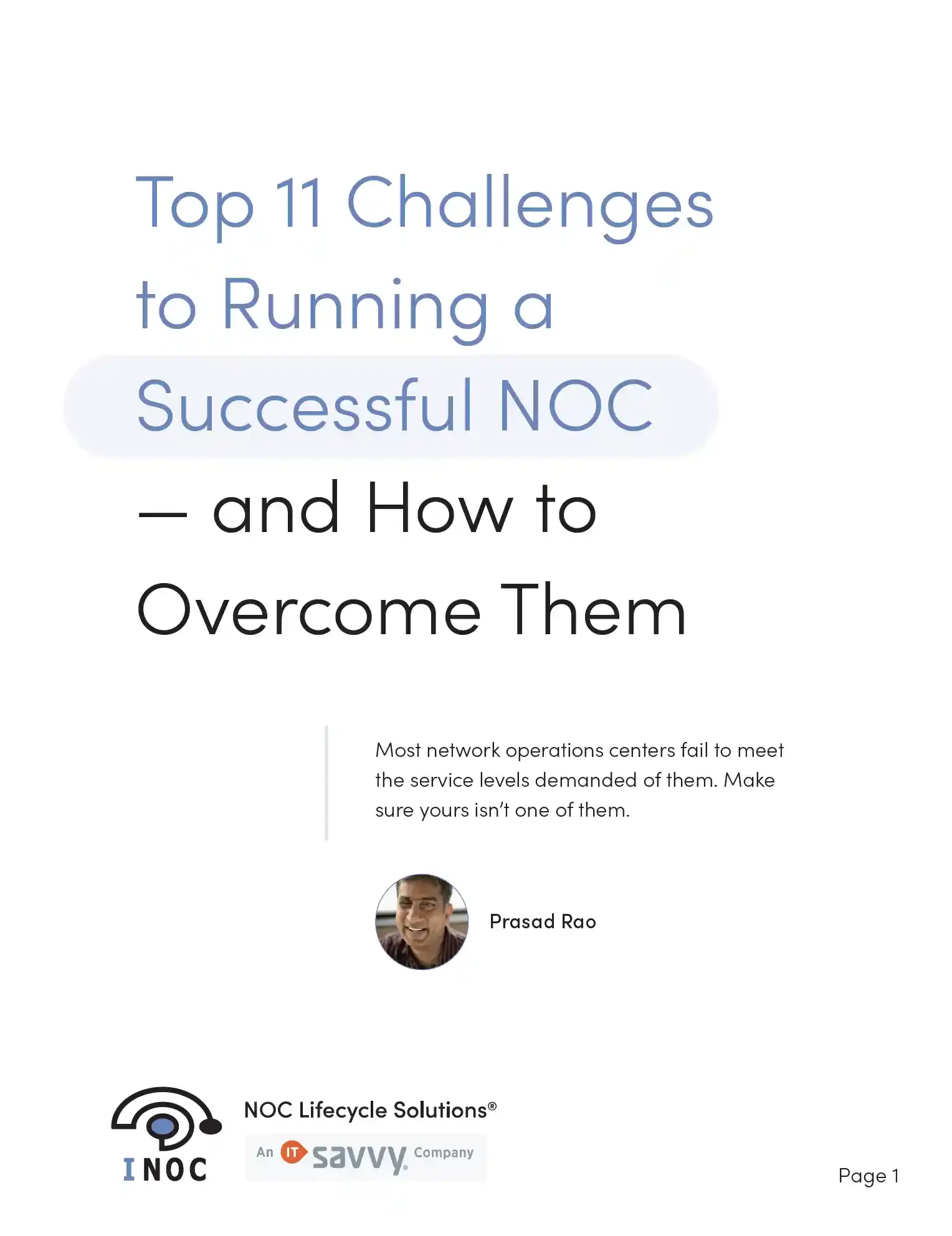
Free white paper Top 11 Challenges to Running a Successful NOC — and How to Solve Them
Download our free white paper and learn how to overcome the top challenges in running a successful NOC.







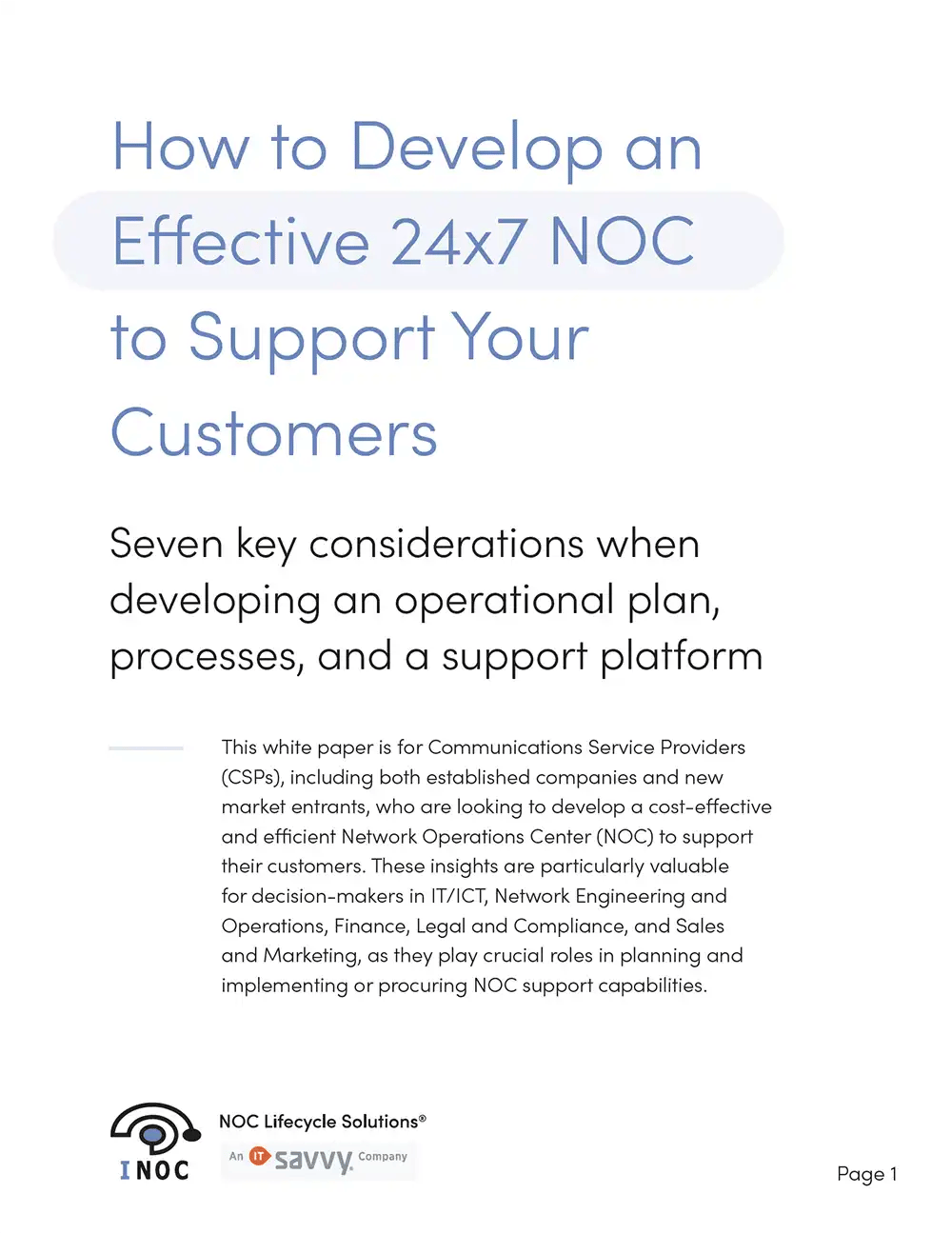

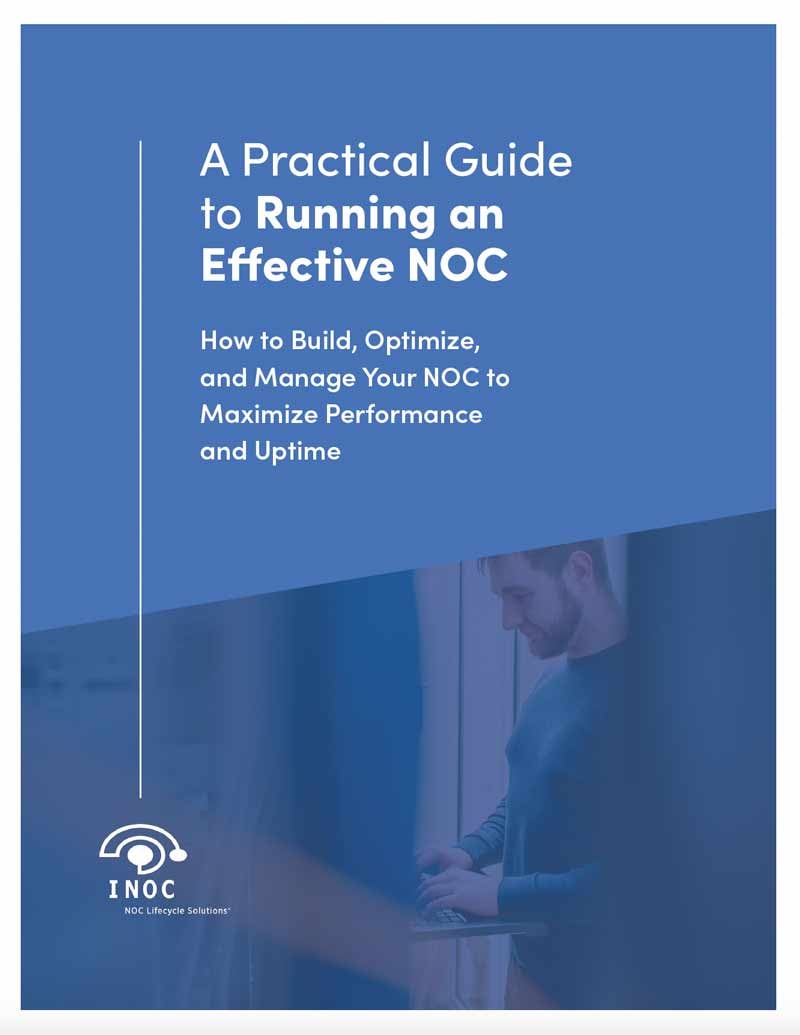
-images-0.jpg?height=2000&name=ino-WP-NOCPerformanceMetrics-01%20(1)-images-0.jpg)



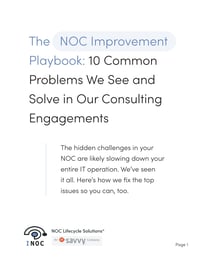
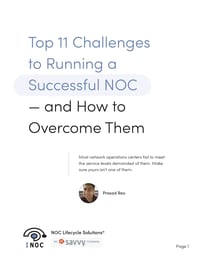
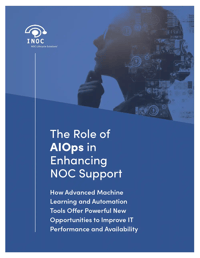
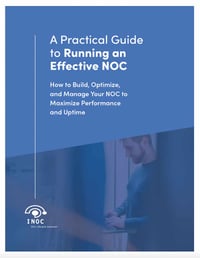
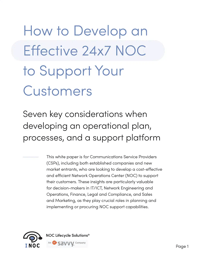
-images-0.jpg?width=200&height=259&name=ino-WP-NOCPerformanceMetrics-01%20(1)-images-0.jpg)